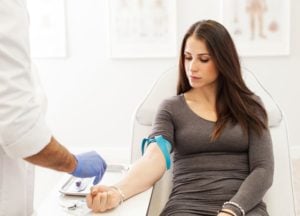Interested in a career in nursing or as a medical assistant? If so, you have many aspects of healthcare and procedures to learn, including those pertaining to phlebotomy. Whether you’re performing a standard blood test or setting up a patient with intravenous (IV) fluids, these processes are complex and require a complete understanding of phlebotomy basics, as well as the necessary skills to perform them. Here’s a look at what you can expect to learn at Prism Career Institute to set you on the track to a successful career.
Understanding the Equipment
Before you can successfully perform a wide range of procedures, one of the first phlebotomy basics to wrap your head around entails learning the equipment you’ll be expected to use. Thanks to our highly regarded curriculum, you’ll gain the necessary knowledge of how the following equipment should be utilized and when:
- Tourniquets
- Needles and syringes
- Evacuated collection tubes
- Holders and adapters
- Alcohol and povidone-iodine wipes
- Needle disposal collector
- Gauze, bandages, and tape
Finding and Selecting Veins
Any phlebotomy procedure starts with finding a suitable vein to puncture with the needle. Venipunctures, or the act of drawing blood from the vein or administering medications to the vein, typically use large and full veins found in the arm, including the median cubital, cephalic, or basilica veins. Sometimes dorsal hand veins are chosen, but foot veins are usually avoided unless absolutely necessary due to the risk of complications. Other areas to avoid include:
- Areas with severe scarring
- Swollen extremities
- The site and surrounding areas of a prior mastectomy
- Location of an existing IV or blood transfusion treatment
- Hematomas, or solid masses of clotted blood
- Spots with cannulas, fistulas, heparin locks, or other medical devices
Performing the Procedure
Once you’ve chosen a suitable vein, you’ll start by preparing equipment, cleaning and disinfecting the site, and explaining to the patient what you’re about to do. It’s rare that you’ll only be drawing one tube of blood, so it’s important that you follow these guidelines during the venipuncture:
- Fill the blood culture tube first, which typically has a yellow top.
- Next, the coagulation tube with a light blue top should be drawn.
- The next tube should be the non-additive tube, which has a red top.
- Lastly, additive tubes should be filled. Depending on which ones your patient requires for testing, they should be collected in this order:
- SST
- Sodium heparin
- PST
- EDTA
- ACDA or ACDB
- Oxalate/fluoride
Handling the Sample
Once the tubes are filled with your patient’s blood sample, the final step in the process involves getting the samples to the lab and correctly labeling each tube with the following information:
- Patient’s full name, sex, birthday, and ID number
- Prescribing physician’s full name
- Date, time, and initials of the phlebotomist
- Which tests are being requested
- Source of the sample, such as cytology, fluid analysis, microbiology, and more
Getting Your Career Started
With knowledge of these phlebotomy basics, you’ll provide your patients with a satisfactory experience and assist your practice in maintaining its day-to-day operations. At Prism Career Institute, both our Medical Assistant and Practical Nursing programs will equip you with the skills and education you need for a thriving career in healthcare. For more information, contact Prism Career Institute today.

